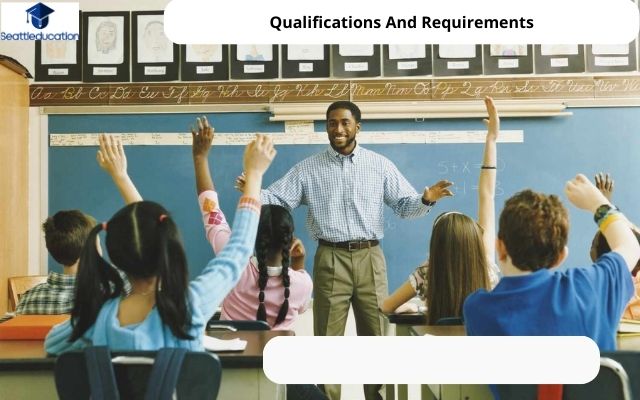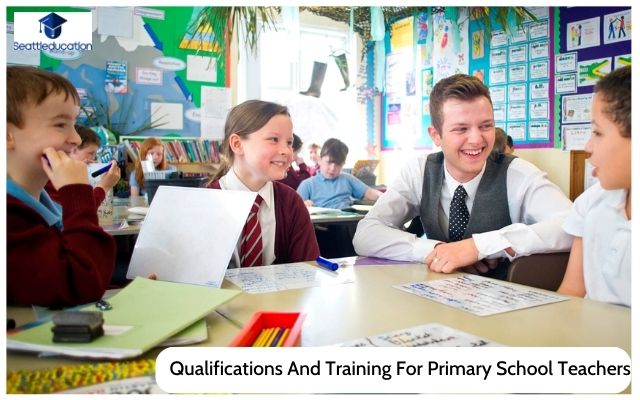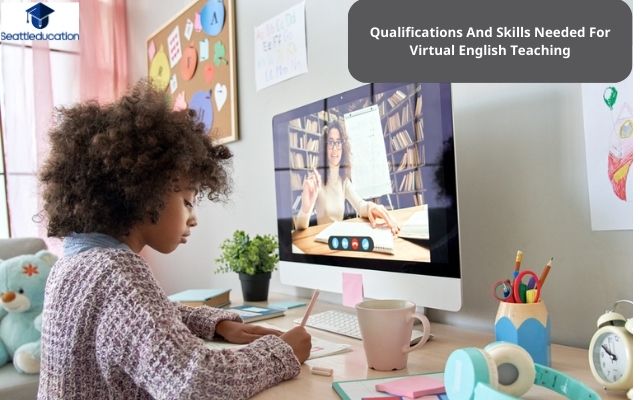Teaching Careers Para Elementary: Opportunities & Challenges
Teaching Careers Para Elementary education are a rewarding and fulfilling way to make an impact on the lives of young children. Elementary teachers work with students from kindergarten through fifth or sixth grade, helping to shape their understanding of the world and develop their skills as they progress academically.
Teaching careers in elementary education can offer both challenges and rewards; read on to learn more about what it takes to become an elementary teacher.
Let’s get started!
Qualifications And Requirements
Let’s start by talking about the educational requirements for becoming an elementary teacher, then we can move onto discussing professional experience.

- Educational requirements are typically a bachelor’s degree in education or a related field.
- Some states may require additional certifications or licenses.
- It’s also important for elementary teachers to have knowledge in child development, classroom management, and teaching techniques.
- Professional experience is also important and can include student teaching, volunteering, or working in education-related roles.
Educational Requirements
Reaching the heights of teaching elementary students requires more than just a passion for education. A combination of educational qualifications and experience is necessary to enter this rewarding career. For starters, most teachers need at least a bachelor’s degree in order to teach in public schools, although some states may require a master’s degree.
On top of that, you must also have completed a teacher preparation program that includes student teaching and passing scores on state exams. With the right credentials and attitude, you can open up the world of learning to young minds and make an everlasting impact.
Professional Experience
Once you have your educational qualifications and teacher preparation program complete, the next step to becoming an elementary school teacher is gathering professional experience. As a student teacher, you’ll get hands-on experience in the classroom setting and gain invaluable insight into how to handle different situations.
Depending on the state, you may also need to complete an internship or practicum program before being eligible for certification. You can also volunteer in schools and nonprofits to build up your resume and further demonstrate your commitment to working with children. With dedication and hard work, you can make your dreams of teaching elementary students a reality.
Job Responsibilities
I’m sure classroom management is going to be a big part of our discussion, so let’s start with that. Planning the curriculum is also important for elementary teachers, so we should make sure to cover that too. Finally, parent communication is key to a successful teaching career, so let’s not forget to talk about that.
Classroom Management
Managing a classroom of elementary students is no easy feat! It requires the teacher to be organized, patient, and creative. There’s lesson planning, assessing student progress, communicating with parents, and so much more. It’s crucial for teachers to set expectations for behavior and ensure that rules are followed in order for learning to take place.
It’s also important to make sure that all students feel supported and respected in order to create an environment that fosters learning and growth. All these responsibilities can be overwhelming at times but when done right, they can lead to amazing results!
Curriculum Planning
When it comes to managing a classroom, curriculum planning is key. It’s important for teachers to be aware of the standards and expectations that need to be met, so they can plan lessons accordingly.
This helps ensure that students are learning what they need and gives them the opportunity to explore topics in depth. Curriculum planning also allows teachers to customize instruction for different student needs and interests. With careful preparation, curriculum planning can make a huge difference in the quality of instruction and overall student success!
Parent Communication
When it comes to job responsibilities, communicating with parents is also an important part of being a teacher. It’s vital for teachers to maintain open communication with parents about their child’s progress and any issues that may arise in the classroom.
This helps build trust between the school, the student, and their family. It also ensures that everyone is on the same page when it comes to expectations and goals for each student. Teachers should always strive to keep parents informed and involved in their child’s education.
Classroom Management
Let’s talk about student motivation first – what strategies have you found work best to keep students engaged and motivated? Next, let’s discuss classroom rules. How do you ensure students are aware of the expectations in your classroom? Lastly, let’s talk about communication strategies – have you found any techniques that help foster open communication between you and your students?

Student Motivation
Motivating your students can be one of the most difficult parts of classroom management! It takes a lot of creativity, patience and understanding to ensure that every student is engaged and eager to learn.
From offering positive reinforcement to setting achievable goals, there are many effective methods for motivating your students. You’ll need to find out what works best for each individual student in order to enable them to reach their full potential.
With the right approach, you can help create an environment where everyone is motivated and excited about learning – and that’s what teaching is all about!
Classroom Rules
Classroom rules are important in any classroom environment. They help to create an orderly and respectful atmosphere, which encourages learning. It’s important to explain the rules clearly to your students, and then remind them throughout the lesson if needed. Having clear rules also helps to ensure that everyone is on the same page about what’s expected of them.
Make sure you’re consistent with enforcing these rules; this will show your students that you take their learning seriously and will help them understand what’s acceptable behavior. Plus, having a set of rules can help minimize distractions and misbehavior so that everyone can focus on the task at hand: learning!
Communication Strategies
Once classroom rules have been established, it’s important to focus on communication strategies. These will help ensure that everyone understands the expectations and the consequences of not following them.
Encouraging open dialogue between students and teachers is essential, as this can help foster a positive learning environment. Additionally, it’s important to make sure clear instructions are given, so that everyone is on the same page. Taking these steps will encourage respect and understanding among your students and help maintain a sense of order in your classroom.
Curriculum Development
Teaching elementary school can be a rewarding and fulfilling career. Developing a strong curriculum is an essential part of the job. A good curriculum should be comprehensive, engaging, and tailored to the age group of the students. It should include all subject areas, from language arts and math to science, social studies, physical education, art and music.
When creating a curriculum for elementary-aged students, it’s important to think about the different learning styles of children in this age group. Some may prefer more hands-on activities while others may prefer lectures or discussions. Differentiating instruction based on student needs helps ensure that all students are engaged in the material.
Additionally, it’s important to consider which concepts need more time or focus as well as what materials will help bring the concepts alive for students.
Creating engaging lessons that cater to individual student needs is key to ensuring that elementary school students understand and retain what they learn. It’s also essential that teachers create an atmosphere where students feel comfortable asking questions and taking risks with their learning.
By developing a strong curriculum and providing differentiated instruction, teachers can set their students up for success in their academic journey.
Instructional Strategies
When teaching elementary students, having a variety of instructional strategies can be beneficial to ensure that all students are engaged and able to access the material.
In order to achieve this, instructors should consider incorporating activities such as:
- Cooperative learning, which is an effective strategy for engaging multiple students at once by allowing them to work together in small groups on assignments.
- Project-based learning, which enables students to learn through problem-solving and critical thinking while still using their creativity.
- Simulations, which offer students hands-on experience with the topic at hand and can help them understand abstract concepts more concretely.
By utilizing these three strategies, instructors can ensure that all students are actively participating in their lessons and gaining a deeper understanding of the material.
Assessment And Evaluation
Building on the instructional strategies discussed in the previous section, it’s important for educators to ensure their teaching objectives are being met.
Assessment and evaluation of student progress is key to this process. Assessing and evaluating student work helps teachers identify areas in which students have excelled or fallen behind, as well as what needs improvement. This way, teachers can provide targeted support for each student and adjust instruction accordingly.
Assessment and evaluation can take many forms. Classroom activities such as quizzes or tests provide a direct measure of knowledge acquisition. Peer review is also an effective tool for assessing comprehension levels and provides an opportunity for peer-to-peer learning. Additionally, teachers can evaluate student performance through portfolios that show how their skills have grown over time.
All these assessment methods help inform teacher decisions about instruction and curriculum design when working with elementary students.
Working With Parents And Guardians
Working with parents and guardians is a key component of teaching elementary school students. It requires the teacher to be adept at both communicating with and understanding the needs of the students and their families.

A teacher must be able to foster a mutually beneficial relationship between themselves, the student, and their parents or guardians in order to facilitate a successful learning environment. Being able to effectively communicate and collaborate with parents can be difficult, but it is an integral part of any elementary education job.
Establishing strong relationships with families can help ensure that all parties are on the same page about expectations for classroom behavior and academic progress. Additionally, these relationships often lead to positive outcomes for the student as well as greater parental involvement in their child’s education.
Overall, developing family connections is an essential skill for any elementary school teacher looking to make an impact in their students’ lives.
Professional Development
Teaching careers for elementary students offer a variety of professional development opportunities. Professional development is essential for teachers to stay up-to-date on the latest teaching techniques, learn new ways to engage with students, and gain valuable knowledge about teaching methods. Professional development can take many forms; it could involve attending conferences, taking classes, or doing online research.
Many school districts offer their own professional development programs tailored specifically to the needs of their teachers. These programs often include workshops, seminars, or other events that provide teachers with an opportunity to interact with experts in their field and learn new strategies.
School districts may also provide resources such as books, videos, and other materials that can help support teachers in their growth and development. In addition, some school districts will even provide financial assistance to help cover the costs of professional development opportunities for their staff members.
Professional development is an important part of any teacher’s career. It can help them become more effective educators and better serve their students. By taking advantage of the resources available from schools and other organizations, teachers can ensure they are staying up to date on the latest trends in education and have access to valuable tools and information that will help them excel in their role as educators.
Conclusion
Teaching elementary students is a rewarding career, and it requires special qualifications and skills. To be successful, teachers must have a comprehensive understanding of curriculum development, instructional strategies, classroom management techniques, and assessment and evaluation procedures.
It’s also important to have excellent communication skills for working with parents/guardians and engaging in professional development activities. With the right qualifications and commitment to student learning, anyone can become an outstanding elementary school teacher. I’m confident that anyone who chooses to pursue this profession will find it both challenging and rewarding.






